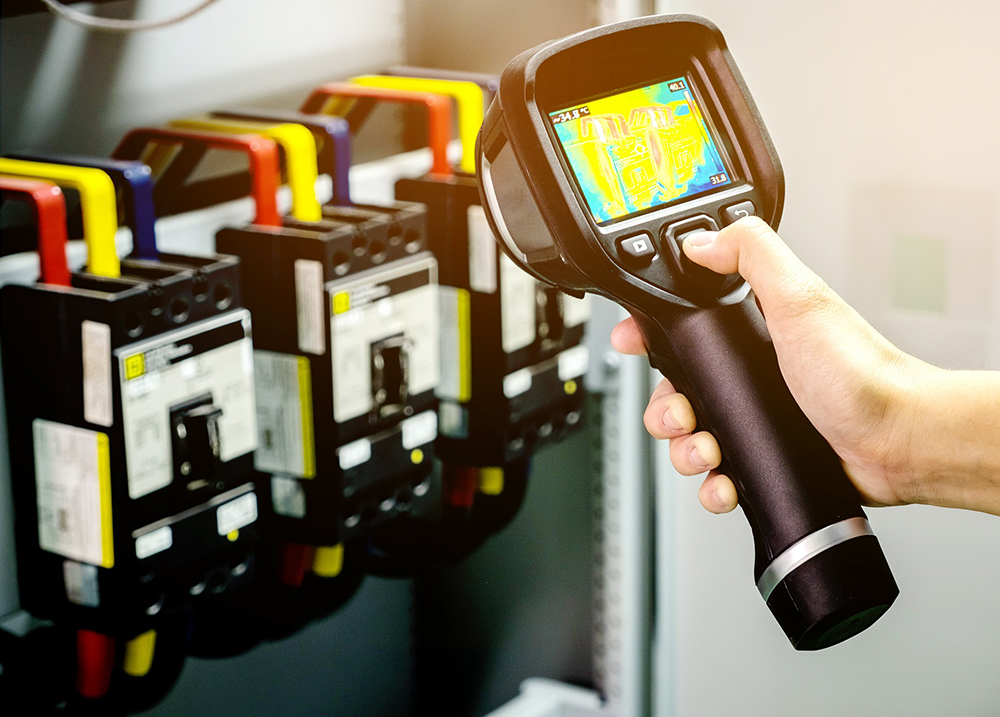Amid the rapid progress of technology, there is one advanced tool that has become a silent hero as it makes inroads into all different industries: thermal imaging. This advanced technology, which was once limited to the military and aerospace realms, has finally extended its tentacles outside these walls into new channels opened up by thermal imaging services.
In short, infrared imaging explores a world hidden from view by the limits of human sight. This blog explores the world of thermal imaging services, peering into its mysteries and unlocking many secrets.
Understanding Thermal Imaging
Infrared imaging, or thermal imaging, is based on the simple concept that every object whose temperature rises above absolute zero radiates energy as infrared light. This technology goes beyond the limitations of visible light, enabling us to see and understand heat signatures from objects, surfaces, or environments.
The heart of this technology is the thermal camera, which has special sensors called microbolometers. Sensors that capture the infrared rays emanating from objects convert them into an image, appropriately coded according to variations in temperature. Thermal cameras aren’t like traditional ones that use visible light; they work well where vision or the emission of visible radiation has been impaired.
The key to grasping thermal imaging is understanding the differences in temperature within a scene. Warmer objects radiate more infrared radiation and appear brighter; cooler areas have darker tones. This nuanced portrayal of the variations in temperatures gives professionals working across disciplines a tool by which they can identify anomalies, inefficiencies, or faults that could potentially pass unnoticed with traditional imaging methods.
Thermal imaging’s basic function has extended into all kinds of fields. Whether it is pinpointing energy losses in buildings or tracking faults in electrical systems, the ability of thermal imaging finds applications across industries.
Applications of Thermal Imaging Services
When the curtain rises on thermal imaging services UAE, a dazzling array of industries comes into view. Each one reaps the rewards brought by this high-tech technology.
● Construction and building inspections
Thermal imaging services have become an essential tool in the arsenals of architects, builders, and inspectors to maximize energy efficiency or locate structural flaws. It allows professionals to identify heat loss or air leakage in buildings and lets them increase insulation levels appropriately to reduce energy consumption.
In the construction industry, thermal imaging can identify potential problems such as water infiltration or insulation gaps that threaten a structure’s existence and even life.
● Electrical Inspections
Thermal imaging services have completely transformed maintenance in the electrical engineering realm. Infrared cameras can trace the heat signatures of electrical components, helping professionals identify places where they’re overheating or lose connections, which could lead to faults.
If no preventative action is taken, these will turn into critical failures later on. With an emphasis on being proactive, this method not only improves safety but also reduces downtime and costly repairs; it is a vital tool for industries that depend on electrical systems.
● Industrial and Manufacturing
For quality control and predictive maintenance, thermal imaging services are widely used in industrial settings. Professionals can prevent breakdowns by monitoring equipment and machinery for temperature anomalies.
This proactive maintenance method can boost operational efficiency, reduce downtime, and save money for manufacturing facilities. It is a way to use today’s advanced tools even better.
● Security and Surveillance
Thermal imaging is a breakthrough in security and surveillance, affording greatly enhanced sight at night. Thermal cameras are used by security professionals to spot intruders, monitor perimeters, and increase situational awareness.
Another critical advantage in securing sensitive areas is that thermal imaging becomes integrated into modern security systems only because of its ability to detect body heat and movement even in total darkness.
Advantages of Thermal Imaging Services
The use of thermal imaging services UAE in an environment where industries are constantly changing creates a whole new dimension that goes beyond what the visible spectrum has to offer. It is an asset to all sectors. Let’s peel back the layers of perks it provides!
● Early Detection and Preventive Maintenance
Early detection of problems is one of the major advantages thermal imaging services have. By capturing temperature differentials, professionals can seek out anomalies that may hint at failures or inefficiencies yet to come.
This allows companies to carry out preventive maintenance work so that adverse breakdowns can be avoided and the total reliability of equipment and systems as a whole can be improved.
● Cost Savings Through Efficiency
Thermal imaging saves a considerable sum of money by implementing energy efficiency. In industries such as construction and building management, identifying points of heat loss or the absence of insulation makes possible spot remodeling.
That, in turn, lowers energy consumption and utility costs to keep pace with sustainable operations. Likewise, in industry, the pre-emptive maintenance facilitated by thermal imaging prevents tools from breaking down and reduces periods of downtime; this equates to financial savings.
● Enhanced Safety in Hazardous Environments
In industries that involve hazardous conditions, such as oil and gas or chemical plants, the role of thermal imaging services is critical to safety. Thermal imaging can provide an early warning system by identifying abnormal heat patterns, which may indicate equipment malfunctions or leaks.
This ability does not only protect personnel from potential dangers; it also helps to avert disasters that would threaten both human life and valuable assets.
● Non-Invasive Inspection
Unlike traditional inspection methods, which may require physical contact or dismantling of equipment, thermal imaging does not involve direct hands-on operation. Its non-contact feature is especially helpful in areas such as healthcare, where detecting anomalies can occur from a distance without the need for direct contact with patients.
Thermal imaging uses a non-invasive approach, which causes minimal disruption and therefore does not discount the effectiveness of inspection procedures or reduce work efficiency.
Technology keeps on marching forward, and the future of thermal imagery services UAE is a land filled with promise. With the introduction of AI, miniaturization, higher resolutions, and multi-spectral imaging entering the mainstream, along with the integration of augmented reality, environmental monitoring faces a paradigm shift.
With these advances, we are entering an era where the invisible not only becomes visible but is also intelligently interpreted. This brings us all kinds of new possibilities that previously had been unthought of.






